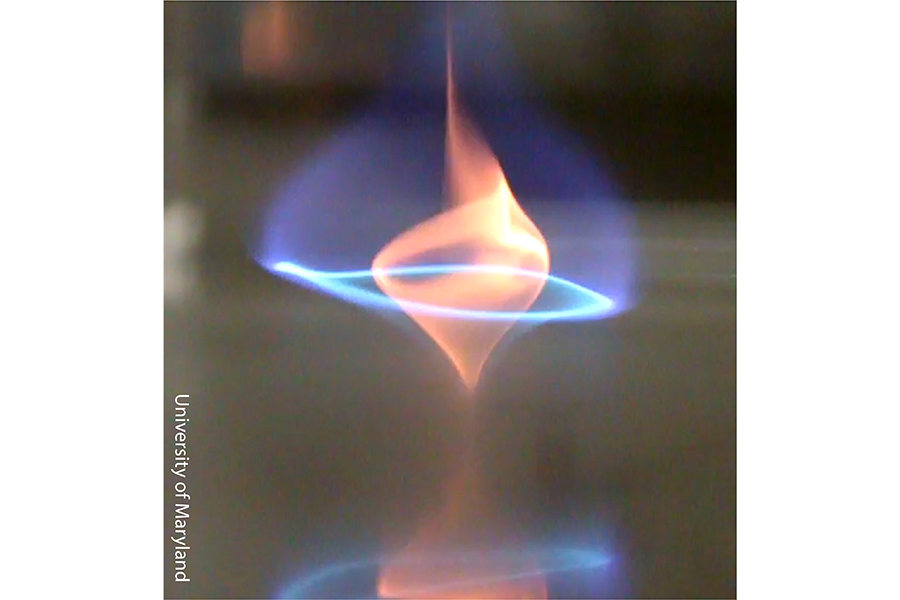Introducing the 'blue whirl,' a new kind of fire
Loading...
Engineers experimenting with fire tornadoes developed a blue and violet swirling vortex of flames that burns more calmly and cleanly than any ever seen before.
Powerfully spinning "fire whirls" burn through their surroundings incredibly efficiently. Now researchers have discovered a lab version they're working to control and make even more efficient. For the first time, scientists have created a “blue whirl” flame that burns cleaner than its traditional yellow counterpart and could potentially be used for more eco-friendly oil spill cleanup.
"A fire tornado has long been seen as this incredibly scary, destructive thing. But, like electricity, can you harness it for good? If we can understand it, then maybe we can control and use it," said fire protection engineer and co-author of the paper Michael Gollner, from the University of Maryland, in a statement.
“This is the first time fire whirls have been studied for their practical applications,” Professor Gollner added.
The blue whirl burns nearly soot-free. It evolves from the yellow fire whirl, whose color comes from glowing soot particles that indicate that there’s not enough oxygen to burn up all the available fuel. In contrast, the blue flame results when there is enough oxygen to burn fuel completely. Complete combustion means less soot and lower carbon emissions.
The team of researchers at the University of Maryland simulated an oil spill in their lab in order to investigate fire whirls on water. Today, a popular technique for cleaning man-made oil spills is to corral crude oil into a thick layer on the water surface in order to burn it. Completing this process with the more efficient blue flame could mean releasing less smoke and fewer harmful particles into the surrounding environment.
“A fire whirl is usually turbulent, but this blue whirl is very quiet and stable without visible or audible signs of turbulence,” said Huahua Xiao, assistant research scientist in the Clark School's Department of Aerospace Engineering and corresponding author of the paper, in a statement. “It’s really a very exciting discovery that offers important possibilities both within and outside of the research lab.”
Researchers were able to keep the blue flame alive for eight continuous minutes by gently feeding the flame with more fuel. In the lab, the flame adds to scientists' understanding of fluid mechanics, but if scientists are able to scale the flame up and get it out of the lab, it could potentially clean up the messy process of recovering from oil spills.







